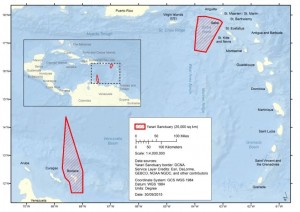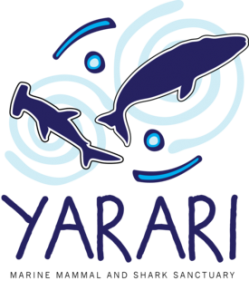Conservation

Thankfully, more and more organizations and individuals around the world are coming to recognize the plight of the world’s shark populations, and scientists have reached a total consensus about the need to protect them. Therefore the IUCN Shark Specialist group has called on action from governments to act, and improve policy to manage and conserve shark species, both internationally and regionally.
Conservation organizations too are speaking up. Around the world, organisations have campaigned for shark finning bans and sustainable management of shark fisheries. In Europe, the Shark Alliance, an alliance of over 100 organizations, got the EU to adopt a Plan of Action for the Management of sharks and to close the loopholes in the EU finning ban.
In 2014, a great victory was won when five shark species, among them commercially interesting species like hammerhead shark and porbeagle shark, were added to Appendix II of the Convention on International Trade of Endangered Species (CITES). And in 2016, the silky shark, thresher sharks and mobula rays were added. In fact, sharks and rays are the only fish, in addition to seahorses, now protected through CITES. For a full overview of sharks listed on CITES, visit their website. In a parallel process, organizations have been campaigning for shark sanctuaries. Led by the Pew Trusts Global Shark Conservation Program, shark sanctuaries now cover 6 million square miles of the world’s oceans and include several nations in the Caribbean.
Protecting sharks in the Dutch Caribbean
Sharks have roamed our oceans since the time of the dinosaurs, but without our help, their long reign may be coming to an end. The onset of industrial fishing and the lucrative market for shark fins in China and the Far East have drastically depleted their numbers. Additionally, many sharks depend on shallow coastal environments for part of their life cycles and this makes them particularly vulnerable to the effects of coastal development. They are also the victim of poor public opinion, branded as mindless bloodthirsty monsters, and seen by fishermen as a competitor and pest. The result of this is that the International Union for the Conservation of Nature (IUCN) currently estimates that one-quarter of sharks and rays are threatened with extinction.
Marine Protected Areas (parks) have been established throughout the Dutch Caribbean to protect the islands’ marine environment but few of them specifically protect the 25 species of shark found in Dutch Caribbean waters.
Bonaire was the first island to introduce legislation to protect sharks; in 2010 it adopted a list of protected species, which included all sharks and rays.
The ‘Man of War Shoal’ Marine Park on St. Maarten became the first marine park to introduce legislation specifically for shark conservation. In October 2011, the Government of St. Maarten issued a temporary moratorium on shark fishing within the Man of War Shoal Marine Park, which prohibits the taking and landing of sharks and requires immediate release of incidentally caught sharks under penalty of a maximum of 500,000 Antillean Guilders or 3 months in prison.

The next landmark event came in October 2015 when Dutch State Secretary, Sharon Dijksma, announced the establishment of the Dutch Caribbean’s first shark sanctuary. Known as the Yarari Marine Mammal and Shark Sanctuary, it encompasses the exclusive economic zones (EEZs) of Bonaire and Saba, including the prestigious Saba Bank, and covers a combined area of 22,382 square kilometers (8,816 square miles). The Yarari Sanctuary was established by a joint Declaration of the State Secretary of Economic Affairs of the Netherlands and the island Governments of Saba and Bonaire in response to official requests in 2015 by the Governors of the two islands to include protection for sharks within the Sanctuary.
The Dutch Ministry of Economic Affairs is preparing a Management Plan for the Sanctuary, which will include regulations to prohibit purse seining, gill-netting and long-lining, as well as targeted commercial fishing for sharks and rays, and particularly the removal of fins (shark finning). Management of the Yarari Sanctuary will be carried out in close cooperation with the AGOA Marine Mammal Sanctuary, established in 2012, which includes the French Caribbean waters surrounding Guadeloupe, Martinique, St. Barths and St. Martin.
In June 2016 St. Maarten’s Prime Minister announced the inclusion of St. Maarten’s waters in the Sanctuary with a prohibition on all commercial shark fishing. The Government of Curaçao simultaneously announced its commitment to shark conservation and vows to establish legislation to protect sharks in its waters within the year. If the Dutch Caribbean jurisdictions of St. Eustatius and Aruba follow suit, the entire Dutch Caribbean could soon be recognized as a regional shark sanctuary.
There are only 14 shark sanctuaries in the world, covering approximately 6 million square miles, with the first Sanctuary established in Palau in the Western Pacific, in 2009. Half of the shark sanctuaries are currently located within the Caribbean, including three in the Dutch Caribbean: Honduras (est. 2011), Bahamas (est. 2011), British Virgin Islands (est. 2014), Bonaire (est. 2015), Saba (est. 2015), Cayman Islands (est. 2016), and St. Maarten (est. 2016).
Facts and Figures
- There are 5 marine protected areas in the Dutch Caribbean but these do not give sharks specific protection: Bonaire National Marine Park ( 1969), Curaçao Underwater Park (est. 1983), Saba National Marine Park (est. 1987), Saba Bank National Park (est. 2010), St. Eustatius National Marine Park (est. 1996), and Man of War Shoal Marine Park (est. 2010).
- In 2010 Bonaire was the first island to introduce legislation protecting all sharks and rays.
- In 2011, the Man of War Shoal Marine Park became the first marine park in the Dutch Caribbean to have specific legislation for shark conservation.
- October 12th, 2011: St. Maarten’s government issues a temporary moratorium on shark fishing within the Man of War Shoal Marine Park. The take and landing of sharks are prohibited and incidentally caught shark must be immediately released.
- The establishment of the Dutch Caribbean’s first shark sanctuaries in Bonaire and Saba, collectively known as Yarari, is announced on September 2nd, 2015
- Yarari covers Bonaire and Saba’s full exclusive economic zones (EEZs).
- All commercial shark fishing is to be prohibited within the sanctuaries up to 200 nautical miles from each island, a combined total of 22,382 square kilometers (8,816 square miles).
- Yarari will help protect the 27 shark species found in Dutch Caribbean waters, including endangered ones such as the scalloped hammerhead and whale shark.
- Implementation of Yarari is being done in close cooperation with the AGOA marine mammal sanctuary.
- Creation of a shark sanctuary for St. Maarten announced in June 2016.
- Curacao has vowed to establish legislation to protect sharks in its waters within the year.
- There are currently 14 shark sanctuaries in the world, covering approximately 6 million square miles.
- Half of the world’s shark sanctuaries are now located within the Caribbean, including three in the Dutch Caribbean.





